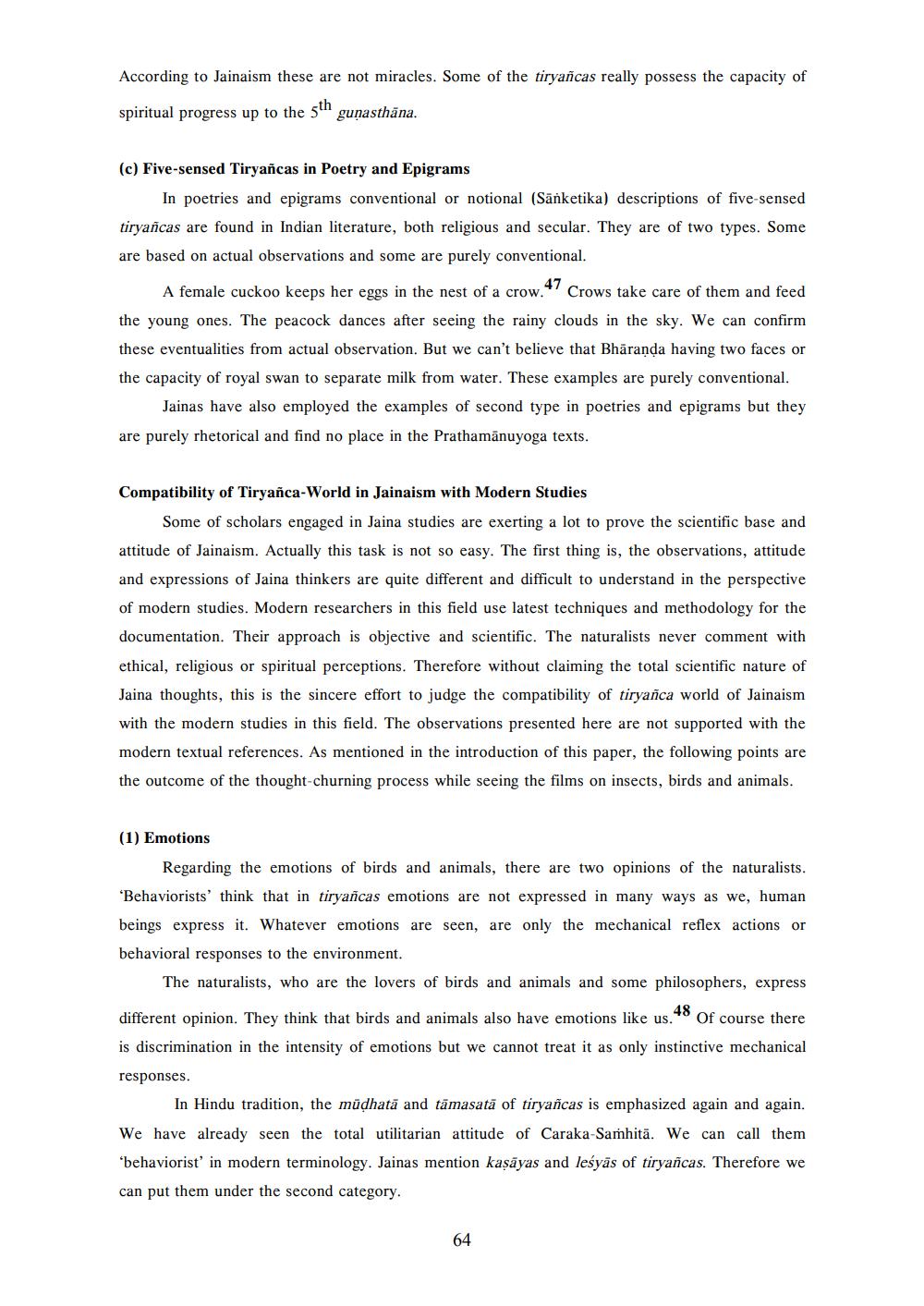________________
According to Jainaism these are not miracles. Some of the tiryancas really possess the capacity of
spiritual progress up to the 5" gunasthāna.
(c) Five-sensed Tiryancas in Poetry and Epigrams
In poetries and epigrams conventional or notional (Sānketika) descriptions of five-sensed tiryancas are found in Indian literature, both religious and secular. They are of two types. Some are based on actual observations and some are purely conventional.
A female cuckoo keeps her eggs in the nest of a crow." Crows take care of them and feed the young ones. The peacock dances after seeing the rainy clouds in the sky. We can confirm these eventualities from actual observation. But we can't believe that Bhāranda having two faces or the capacity of royal swan to separate milk from water. These examples are purely conventional.
Jainas have also employed the examples of second type in poetries and epigrams but they are purely rhetorical and find no place in the Prathamānuyoga texts.
Compatibility of Tiryanca-World in Jainaism with Modern Studies
Some of scholars engaged in Jaina studies are exerting a lot to prove the scientific base and
attitude of Jainaism. Actually this task is not so easy. The first thing is, the observations, attitude and expressions of Jaina thinkers are quite different and difficult to understand in the perspective of modern studies. Modern researchers in this field use latest techniques and methodology for the documentation. Their approach is objective and scientific. The naturalists never comment with ethical, religious or spiritual perceptions. Therefore without claiming the total scientific nature of Jaina thoughts, this is the sincere effort to judge the compatibility of tiryanca world of Jainaism with the modern studies in this field. The observations presented here are not supported with the modern textual references. As mentioned in the introduction of this paper, the following points are the outcome of the thought-churning process while seeing the films on insects, birds and animals.
(1) Emotions
Regarding the emotions of birds and animals, there are two opinions of the naturalists. Behaviorists' think that in tiryañcas emotions are not expressed in many ways as we, human beings express it. Whatever emotions are seen, are only the mechanical reflex actions or behavioral responses to the environment.
The naturalists, who are the lovers of birds and animals and some philosophers, express
different opinion. They think that birds and animals also have emotions like us.48 Of course there is discrimination in the intensity of emotions but we cannot treat it as only instinctive mechanical responses.
In Hindu tradition, the mūdhatā and tāmasatā of tiryañcas is emphasized again and again. We have already seen the total utilitarian attitude of Caraka-Samhitā. We can call them "behaviorist' in modern terminology. Jainas mention kaşāyas and leśyās of tiryancas. Therefore we can put them under the second category.




